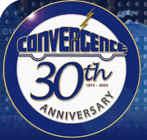TI Introduces Industry's First Integrated Solutions Optimized for Next Generation Enhanced Radios, Reducing System Cost and Design Complexity
 |
OMAP(TM) Based Solutions Make Moving Audio to Car Radio Jukeboxes Easier
DALLAS, Oct. 19 -- Texas Instruments Incorporated (TI), a silicon provider to the automotive industry for over 20 years, again has raised the bar for the in-car infotainment experience by introducing the industry's first fully-integrated solutions optimized for next-generation automotive infotainment applications. These OMAP architecture-based solutions offer tier one automotive suppliers an ideal combination of system level integration and concurrent processing capabilities for high performance, feature-rich automotive infotainment products. TI will demonstrate these new solutions at the Convergence show in Detroit, MI on October 18 - 20. (See http://www.ti.com/dr12 .)
Automotive head-unit developers are struggling with the need to simultaneously support several communication standards, multiple storage media and encode/decode functionality in their new radio systems. Add to this the desire to integrate hands-free and speech recognition functions into next- generation products, and the resultant "module proliferation" adds cost, time and complexity to the design and development process.
Radio architectures typically require a microcontroller (MCU), an applications or host microprocessor (MPU) and a DSP to perform all of these functions. Each processor has its own development environment, usually sourced from various suppliers, and requires the radio developers to have expertise in multiple operating systems. Some developers have overcome these hurdles by integrating more functions onto high-performance MPU devices, but because so many of the underlying functions depend on efficiently executed digital signal processing algorithms, MPU-only solutions quickly run out of gas.
TI has developed a solution to this problem by leveraging its experience in automotive, audio, speech processing and technology integration. These new automotive infotainment processors are capable of replacing the MCU, MPU and DSPs common in today's solutions with one dual-core device, reducing overall system cost and complexity, allowing developers to use only one operating system, and leveraging the industry's most robust library of audio, speech, communications and digital media software. Not only does this efficient, dual-core architecture offer the industry's most highly integrated solution for automotive entertainment, it also ensures greater responsiveness to user requests when signal processing is needed. It does so by preventing the cache thrashing that occurs when MPU-only architectures attempt to do signal processing concurrent with other host applications.
"Successful, next-generation infotainment applications will enable consumers to connect seamlessly to their mobile devices to transfer audio or data content to the vehicle," says Thilo Koslowski, vice president and lead automotive analyst, Gartner Inc. "Technologies that will enable such applications must be flexible, robust and most importantly cost-effective in order to achieve broad industry adoption."
A Sound Combination
TI's new automotive OMAP technology merges automotive peripherals, such as CAN and SPI, with a broad range of memory and storage devices including NAND and NOR Flash, IDE, ATAPI, SDRAM and DDR-1. From a multimedia interface perspective, the new OMAP solutions also offer many I2S pairs, an S/PDIF interface and PCM speech ports, enabling them to support emerging audio standards such as high-quality DVD audio and surround sound, as well as Bluetooth-enabled hands-free speech applications.
Hard Disk Drive (HDD) jukeboxes will need to support several modes of connectivity for downloading digital content. "Users aren't going to install Ethernet ports in their garage or drag removable HDDs from their PC to load content onto their radios," says Curt Moore, manager of Digital Radio and Infotainment, TI. "Based on their wireless origin, these OMAP-based processors support wireless connectivity such as Bluetooth or Wi-Fi for effortless media content exchange while operating within system power limitations. The products have enough headroom to enable emerging applications such as in-car ripping, which lets consumers use the radio to rip a CD to the HDD automatically while it is playing, bringing the at-home digital media experience to the car."
A Symphony of Software
The new single-chip solutions' performance capabilities let tier one automotive suppliers implement advanced features like hands-free speech recognition, enabling the execution of speech-enabled browsing of the music catalog while encoding, decoding and playing compressed audio from the media jukebox. The new solutions support automotive and digital media-related standards including MP3, Windows Media Audio (WMA) and Advanced Audio Coding (AAC), and the programmability of TI's OMAP technology helps OEMs stay at the forefront of the changing face of radio head units with its capability of adapting to new audio and data standards, by provisioning feature upgrades in the field.
For radio devices, the power management requirements can be complex and vary from vehicle to vehicle. Radios must keep the time-of-day and begin playing audio nearly instantly -- functions typically handled by the quick- booting system MCU. Utilizing innovative QNX real-time operating system driver technology, these devices are able to fulfill the MCU functions while also supporting higher level QNX applications. The QNX Neutrino Board Support Package (BSP) software will also include the QNX Power Management Framework that supports a new processor sleep mode for an impressive standby current of less than 100 microAmps.
Availability
Currently sampling to automotive infotainment customers, TI anticipates that both devices will receive automotive qualification by year's end, adhering to the AEC Q-100 qualification standards.
Texas Instruments Incorporated provides innovative DSP and analog technologies to meet our customers' real world signal processing requirements. In addition to Semiconductor, the company's businesses include Sensors & Controls, and Educational & Productivity Solutions. TI is headquartered in Dallas, Texas, and has manufacturing, design or sales operations in more than 25 countries.
Texas Instruments is traded on the New York Stock Exchange under the symbol TXN. More information is located on the World Wide Web at http://www.ti.com/ .


